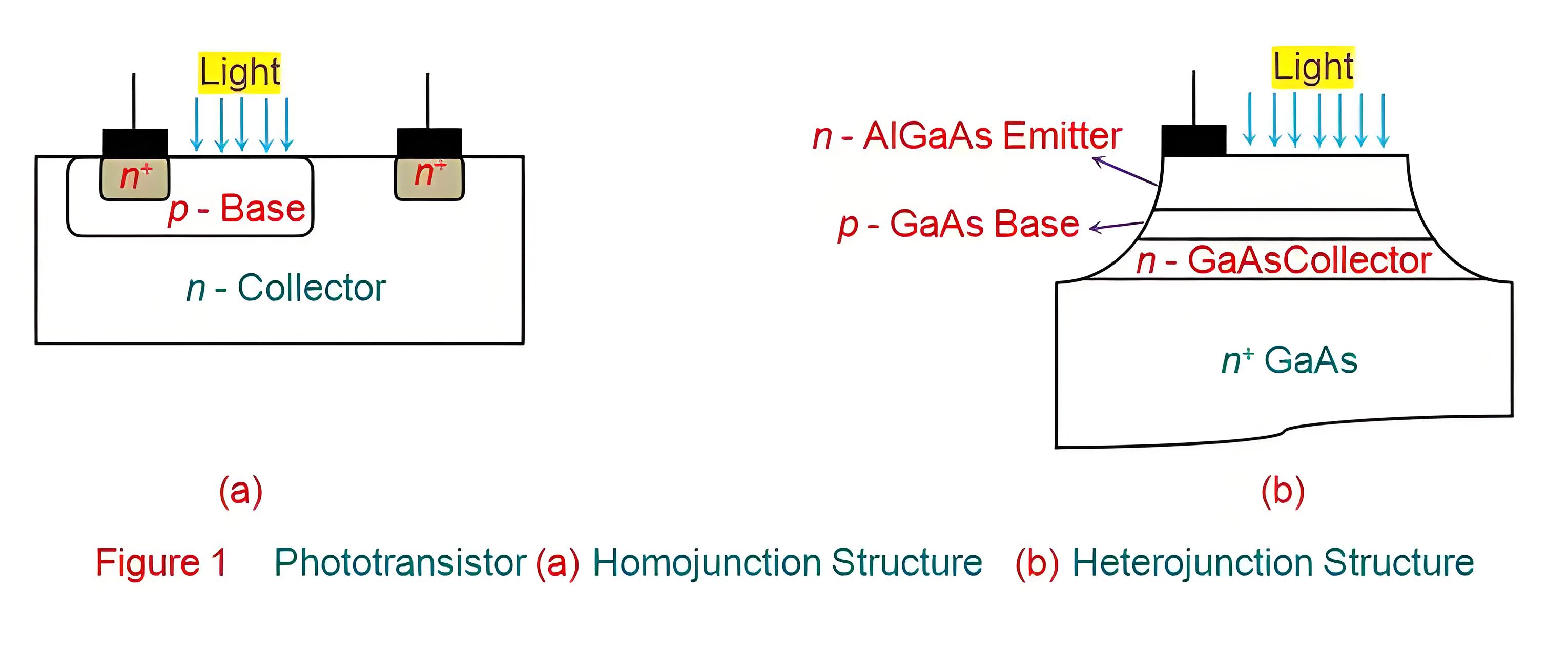What is a Phototransistors?
What is a Phototransistors?
Phototransistor Definition
A phototransistor is defined as a semiconductor device with a light-sensitive base region, designed specifically for detecting and amplifying light signals.
Phototransistors are semiconductor devices with either three terminals (emitter, base, and collector) or two terminals (emitter and collector) and have a light-sensitive base region. While all transistors are somewhat light-sensitive, phototransistors are specifically optimized for light detection. They are made using diffusion or ion-implantation techniques and have larger collector and base regions than regular transistors. Phototransistors can have a homojunction structure, made of one material like silicon, or a heterojunction structure, made of different materials.
In the case of homojunction phototransistors, the entire device will be made of a single material-type; either silicon or germanium. However to increase their efficiency, the phototransistors can be made of non-identical materials (Group III-V materials like GaAs) on either side of the pn junction leading to heterojunction devices. Nevertheless, homojunction devices are more often used in comparison with the hetero junction devices as they are economical.

The circuit symbol for npn phototransistors is shown by Figure 2 includes a transistor with two arrows pointing towards the base, indicating light sensitivity. For pnp phototransistors, the symbol is similar, but the arrow at the emitter points inward instead of outward.

Working Principle
Phototransistors work by replacing the base current with light intensity, allowing them to function in switching and amplification applications.
Configuration Types
Phototransistors can be set up in common collector or common emitter configurations, similar to regular transistors.
Output Factors
The output of a phototransistor depends on the incident light’s wavelength, the collector-base junction’s area, and the transistor’s DC current gain.
Advantages of Phototransistor
The advantages of phototransistors include:
Simple, compact and less expensive.
Higher current, higher gain and faster response times in comparison with photodiodes.
Results in output voltage unlike photo resistors.
Sensitive to a wide range of wavelengths ranging from ultraviolet (UV) to infrared (IR) through visible radiation.
Sensitive to large number of sources including incandescent bulbs, fluorescent bulbs, neon bulbs, lasers, flames and sunlight.
Highly reliable and temporally stable.
Less noisy when compared to avalanche photodiodes.
Available in wide variety of package types including epoxy-coated, transfer-molded and surface mounted.
Disadvantages of Phototransistor
The disadvantages of phototransistors include:
Cannot handle high voltages if made of silicon.
Prone to electric spikes and surges.
Affected by electromagnetic energy.
Do not permit the easy flow of electrons unlike electron tubes.
Poor high frequency response due to a large base-collector capacitance.
Cannot detect low levels of light better than photodiodes.
Applications
Object detection
Encoder sensing
Automatic electric control systems such as in light detectors
Security systems
Punch-card readers
Relays
Computer logic circuitry
Counting systems
Smoke detectors
The Electricity Encyclopedia is dedicated to accelerating the dissemination and application of electricity knowledge and adding impetus to the development and innovation of the electricity industry.













